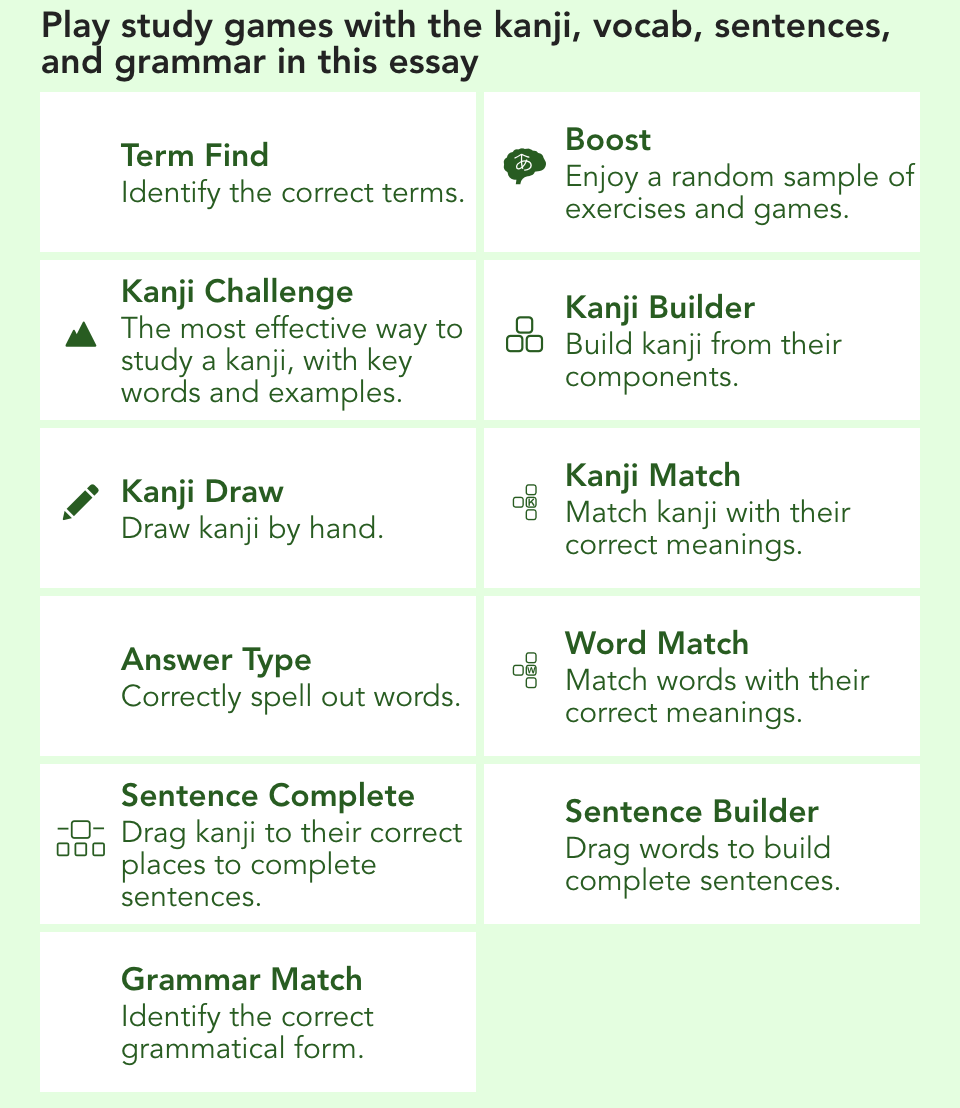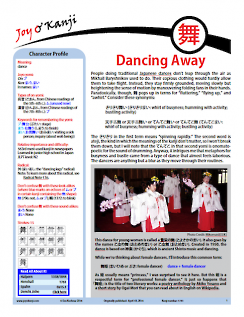舞
dance
Kanji 1761
Thank you for visiting this Character Home Page. Below you'll find a synopsis of the essay. If you wish to read the full text, the PDF of the essay is available for purchase to the right.
Traditional Japanese dance may seem tangential to your life, but it has connections to the gods, so don't overlook it! Also, 舞 is a core part of Nihongo, factoring into terms for bustling activity, story settings, being in the limelight, behaving well or badly, treating others to meals, visiting the sick, seasonal greeting cards, and closing up shop, as well as the words for kabuki and butoh.
Revision history:
May 9, 2025:
- p. 1, photo caption: Enhanced the last paragraph, providing a better link for the Mori story and adding that Kawabata also wrote a work of fiction with the same title.
- p. 11, 1st paragraph: Deleted the comment about how 傾 is a Joyo kanji, as that seems unnecessary.
May 9, 2024: p. 10: Changed the def. of 歌舞伎 from "Japanese classical drama" to "kabuki, a traditional form of drama and music."
July 7, 2023: p. 6: Revised the caption about the sign.
Nov. 24, 2021:
- p. 2, Etymology Box: Replaced the Henshall etymology with the new one.
- p. 26: Added a link to the Kanshudo games.
June 29, 2017: pp. 2, 8, and 20: Fixed broken links.
May 22, 2015: On p. 23, a photo caption about a sign with お見舞いを申し上げます (おみまいをもうしあげます: you have our deepest sympathy) now reflects that this phrase includes を.
Nov. 21, 2014: p. 20: In the photo caption about the Gauguin sign, 弱 should have been 溺.
Apr. 18, 2014: Originally published.



Comments